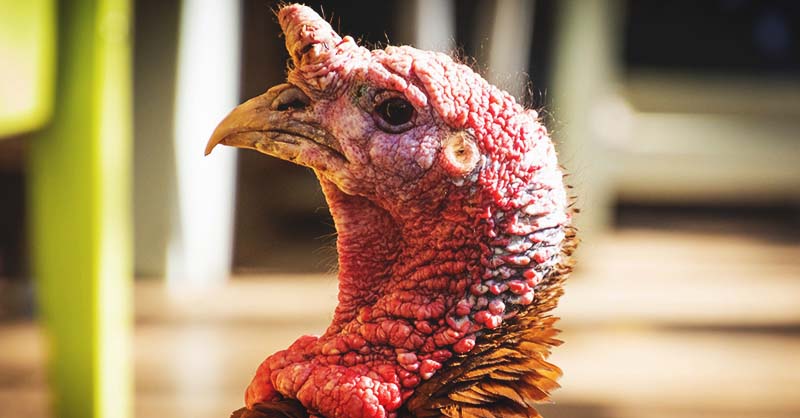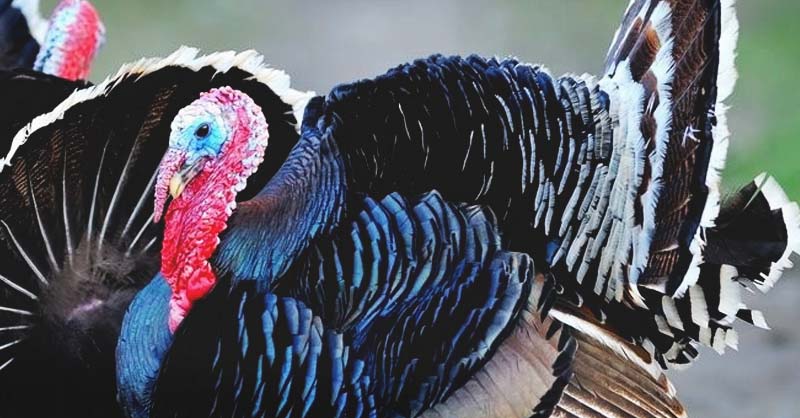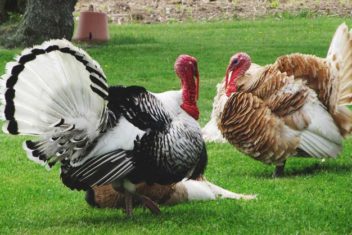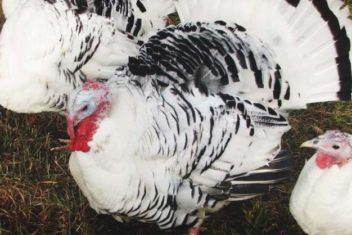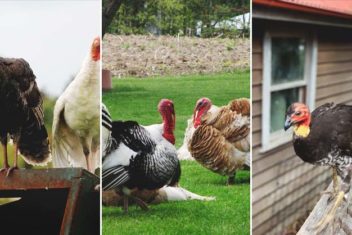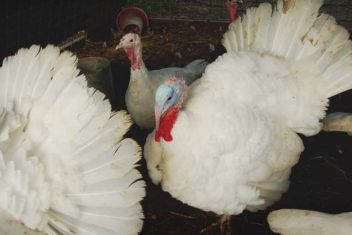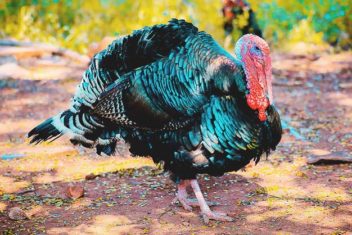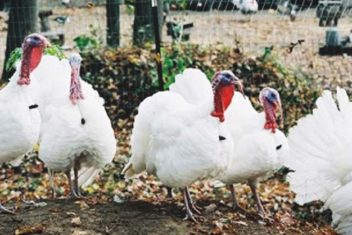Are you considering raising your own turkeys this year? From the get-go, you need to know that turkeys aren’t the most cost-effective animal to include on your homestead, but it’s worth it to many.
Some homesteaders and health-minded individuals like me, like to know exactly what went into the meat they’re eating on Thanksgiving as opposed to commercially raised turkeys fed with who-knows-what.
Whatever your reason for raising turkeys, it’s important to know how to raise them from their infant state (also known as a poult.)
They’re a little different than chickens and have a few extra needs. Here’s what you should know when raising turkey poults:
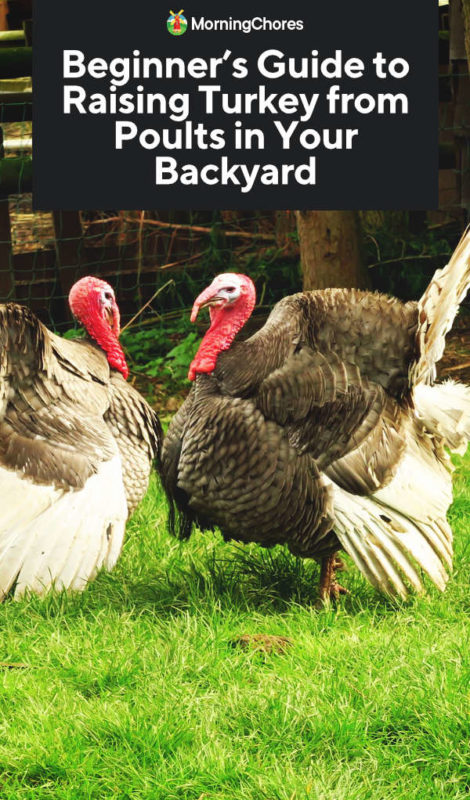
1. The Brooder Is Important
When raising chickens, you usually place them in a brooder under a heat lamp and let them do their thing until their adult feathers come in.
Turkeys are different. When you place turkeys in a brooder, you must make sure the brooder is large enough to accommodate their size and needs.
Place them under a heat lamp starting at 95-100°F. Drop the temperature by 5° each week until they’re fully feathered. This takes an average of 2 months, and the heat lamp should be left on them during cold nights for a month after their feathers come in.
Watch their behavior when under the heat lamp. If the poults are bunched together and noisy, they’re most likely cold or becoming ill.
If they’re running away from the lamp, they’re too hot. Still, if they’re spread out and quiet, they’re happy birds.
The size of the brooder matters when dealing with the heat lamp because they need enough space to be able to get away from it if they become too hot.
2. Cleanliness Can Save Your Birds
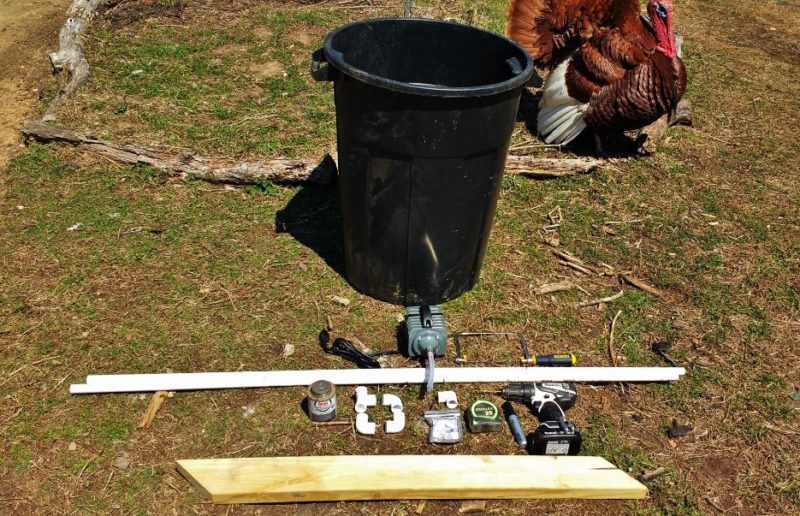
We all know our animals deserve a clean place to live. If you want to raise healthy birds, you must give them a decent start.
Therefore, make sure you give your birds fresh bedding and rotate the bedding around every day to bring the clean bedding to the surface and allow the older bedding to breakdown.
Add fresh bedding when needed. The bedding should remain as dry as possible. When you add the heat from the lamp to moist bedding, you’re creating a perfect scenario for diseases to breed, which is what you don’t want.
It’s like a giant petri dish. To keep diseases at bay, make sure your poults live in a clean area, and you focus on keeping the area dry too.
3. The Right Food and Water
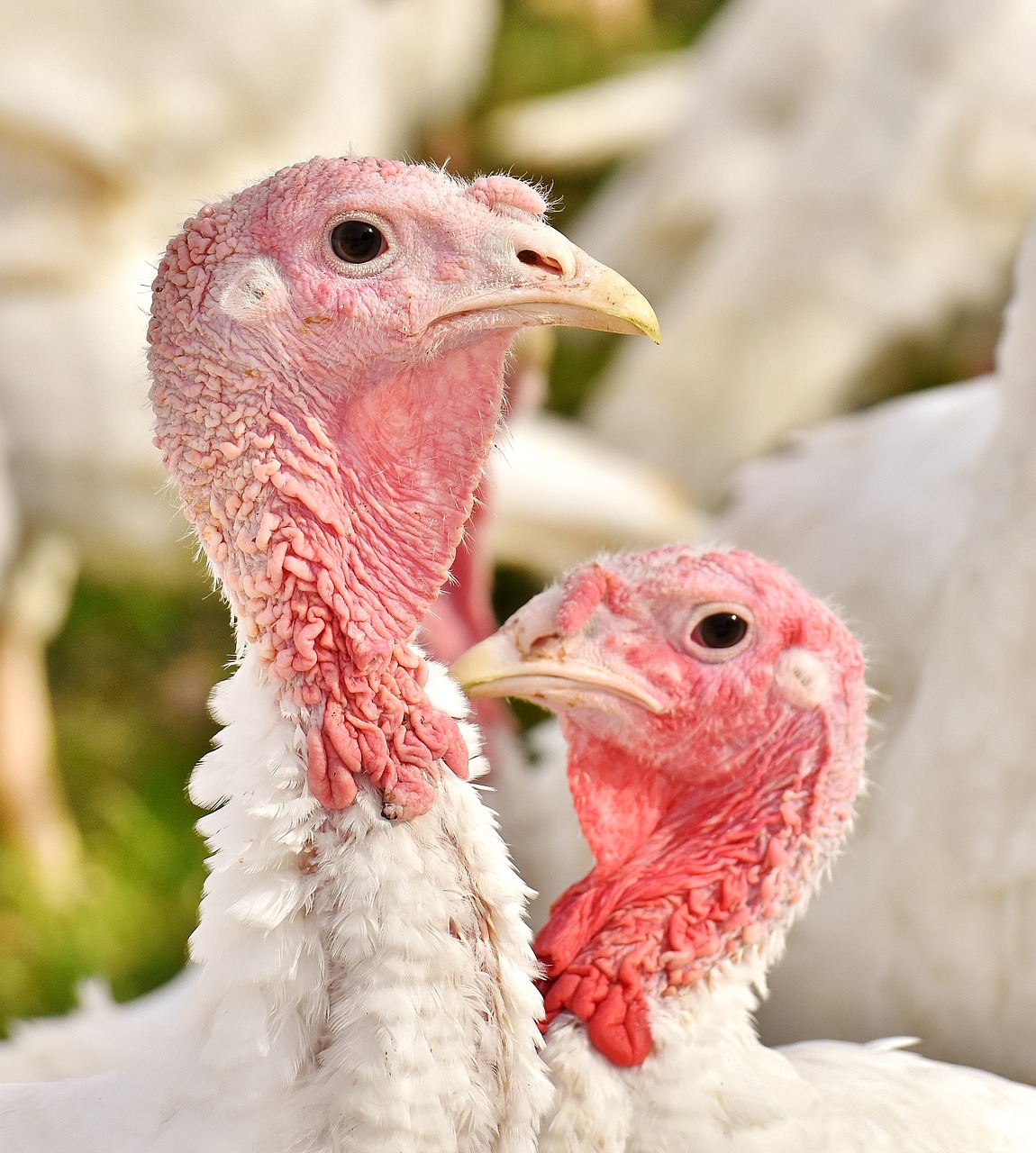
Poults have picky diets. They’re large birds in the making and need the proper nutrients to get them to where they should be.
When the poults are 2 months and younger, they should be fed a diet high in protein. They need approximately 28% protein.
After they’ve reached 2 months, you can drop their feed to 18% protein. Make sure you don’t feed poults or adult turkeys layer pellets. There’s too much calcium in them.
When the poults have reached one month, you can add chicken grit to their feed.
Once they’ve reached8 weeks, you can begin adding grain to their diet. Be sure to feed them grain and the high protein feed in 2 separate containers.
Turkeys tend to toss the protein feed out trying to get to the grain. By separating them, it should help avoid waste. Oats is an excellent choice for grain because it helps with bone density and stops the turkeys from picking their feathers.
Make sure the turkeys are given fresh water every day. However, make sure you avoid giving them cold water. It must be lukewarm because cold water has been shown to kill turkey poults.
By following these few rules during feeding time, your birds should have the best opportunity to thrive.
4. Typical Turkey Behavior
If you’re used to raising chickens or ducks, watching turkey poults may startle you at first. Chicks and ducklings can be somewhat active.
Turkey poults are the opposite. They will sleep for the majority of the day, but when they’re awake, they’re lively.
It’s normal to see them going from sleeping for hours on end to having brief periods of play and activity. If your turkeys are sleeping, most likely they’re okay.
You should only become worried if everyone is up and moving, and you have turkeys who act as though they lack the strength to move.
5. Avoiding Dehydration

Have you done much research on turkeys? Chances are you’ve heard how they can lack intelligence at times.
This lack of intelligence can lead them to become dehydrated. Turkeys struggle with learning how to eat and drink.
Some recommend integrating them with baby chicks to give them an opportunity to take lessons from the chicks on how to survive.
It’s important to make sure neither set of birds have a disease, or they can make each other ill, quickly.
When you first place your poults in the brooder, be sure to dip their beaks in their water container to show them where they should get water in the future.
Keep a watchful eye because they may still struggle to find the water in the future. Therefore, it’s a good idea to put shiny objects in their water.
It is to draw their attention and make them peck at it. In the process, they’ll drink. You may have to do this for the first few months.
Be sure to wash the objects when giving them fresh food and water each day.
Also, if you see a bird acting sluggish, most likely they’re dehydrated. Pick the poult up and dip its beak in the water.
Hopefully this will encourage the poult to drink and regain strength quickly.
6. Avoiding Pile Ups
The next issue you may face when raising poults is they like to pile up on top of one another. They may do this if they’re scared or if they’re cold.
The issue arises when a poult gets stuck in a corner of the brooder box, can’t get out, and eventually dies.
To avoid this, use a piece of cardboard as a barrier to block the poults from getting stuck in the corners.
You can place the barrier wherever you like in the beginning. Place it as close or as far from the heat lamp as you choose.
Be sure as they get bigger to move the barrier farther back to give them space while still protecting them.
7. Avoiding an Impacted Crop
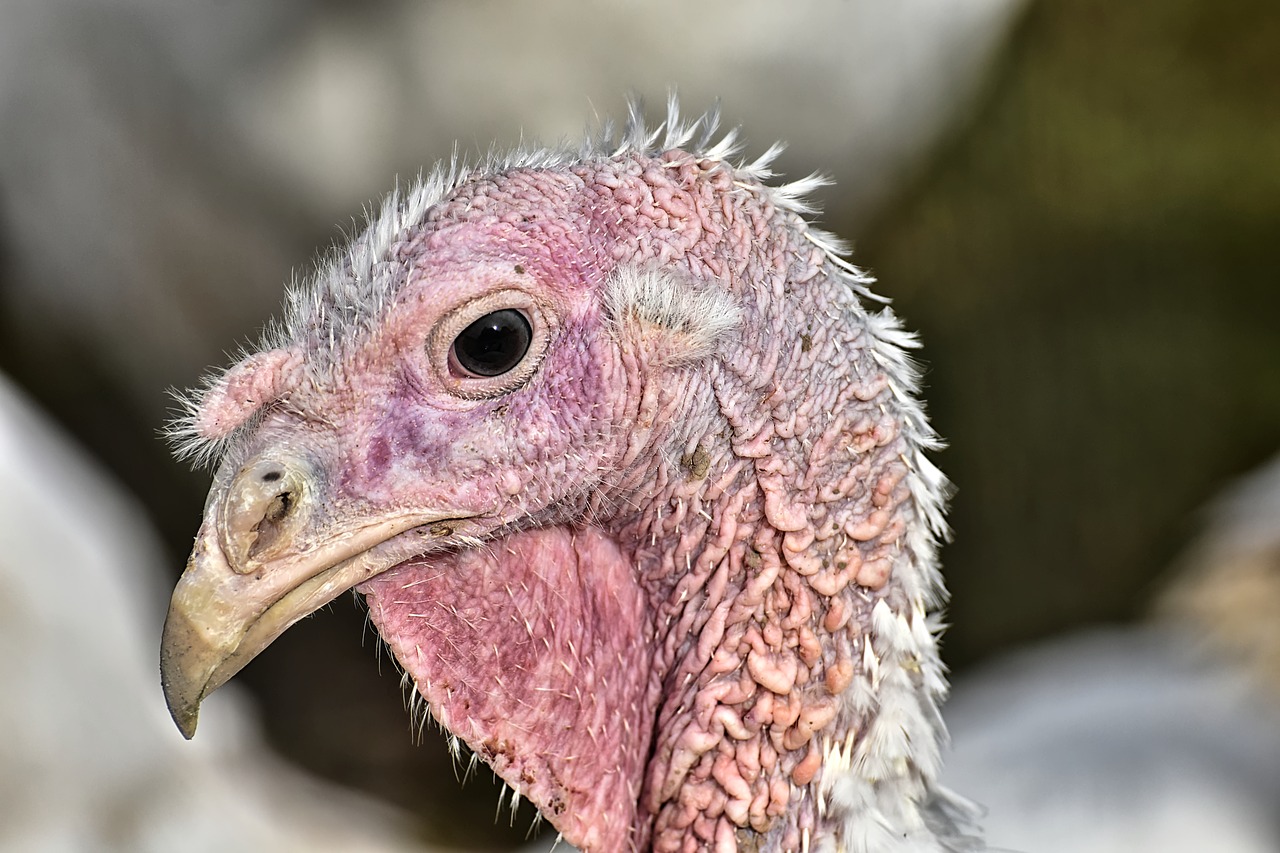
As I mentioned above, turkeys aren’t the smartest bird in the coop. They can easily develop an impacted crop because they eat their pine bedding mistaking it for their food.
To keep your birds safe and avoid this catastrophe, put a piece of cardboard beneath their feeder for the first few weeks.
The cardboard floor will allow the bird to eat food it drops without getting it confused with the bedding. If you don’t, they’ll drop food and eat pine shavings assuming it’s their food from the feeder.
Their crop becomes large and impacted, and you suddenly have a bird in trouble. Take the time to put the cardboard placemat out for them. You’ll be glad you did.
Raising turkey poults can be an interesting experience. Hopefully, this information will better prepare you as you take this journey.
Remember to keep their areas clean. Give them a proper diet with clean water. Also, make sure you watch the temperature of the brooder and help them avoid a few common issues turkeys seem to face.
By doing these few things, your turkeys should thrive, and your efforts should produce a lovely addition to your homestead or a delicious meal for the holidays.
